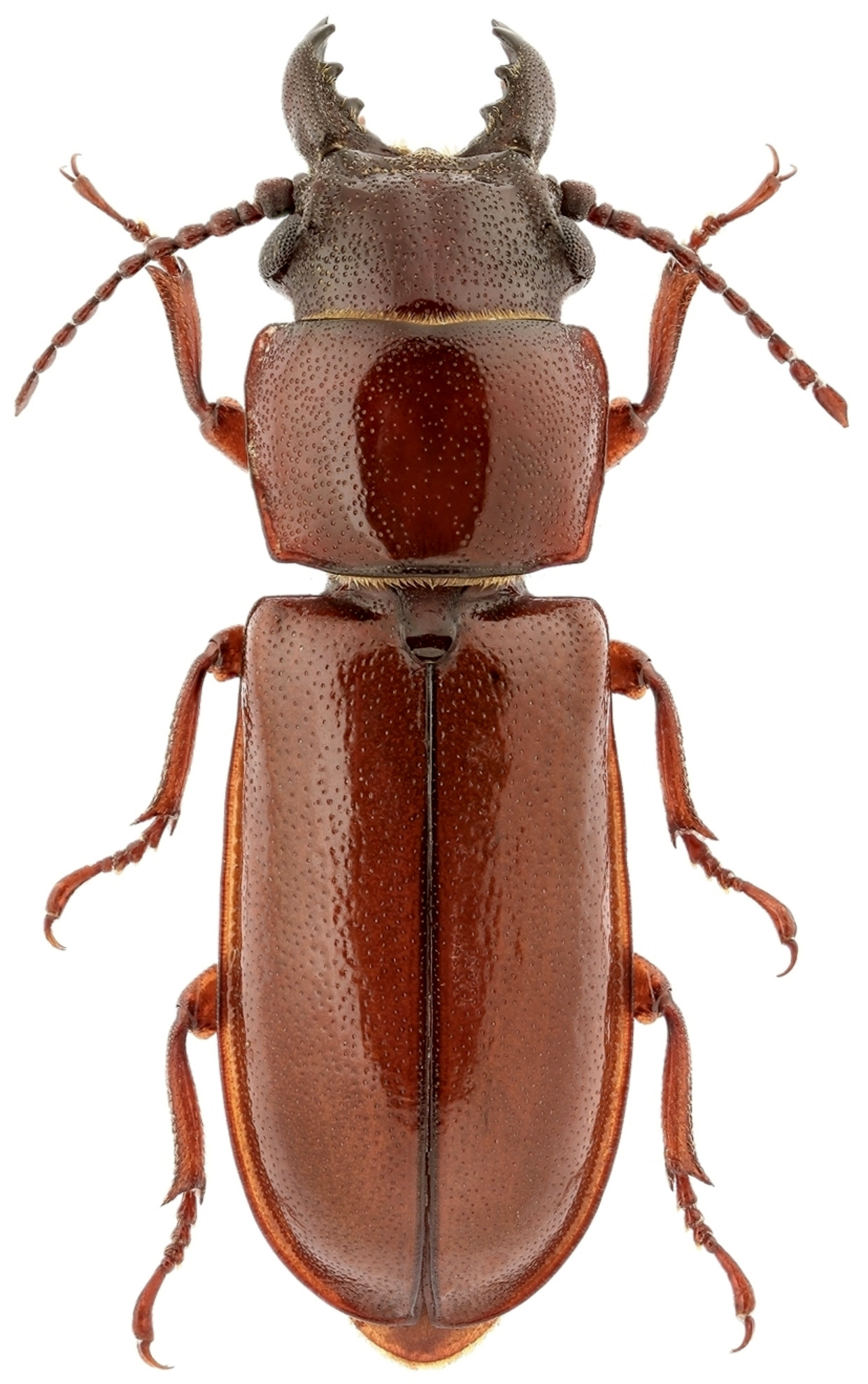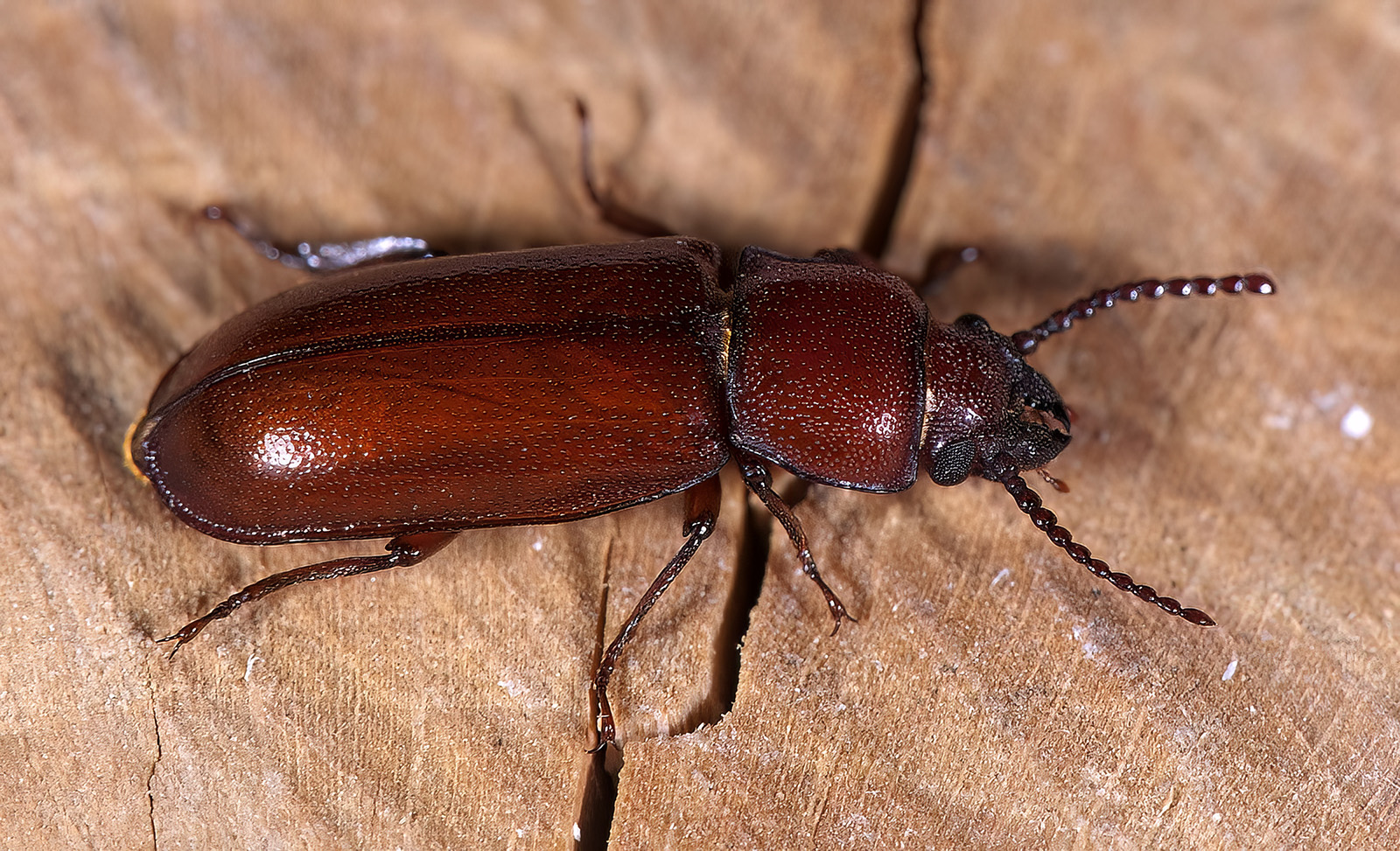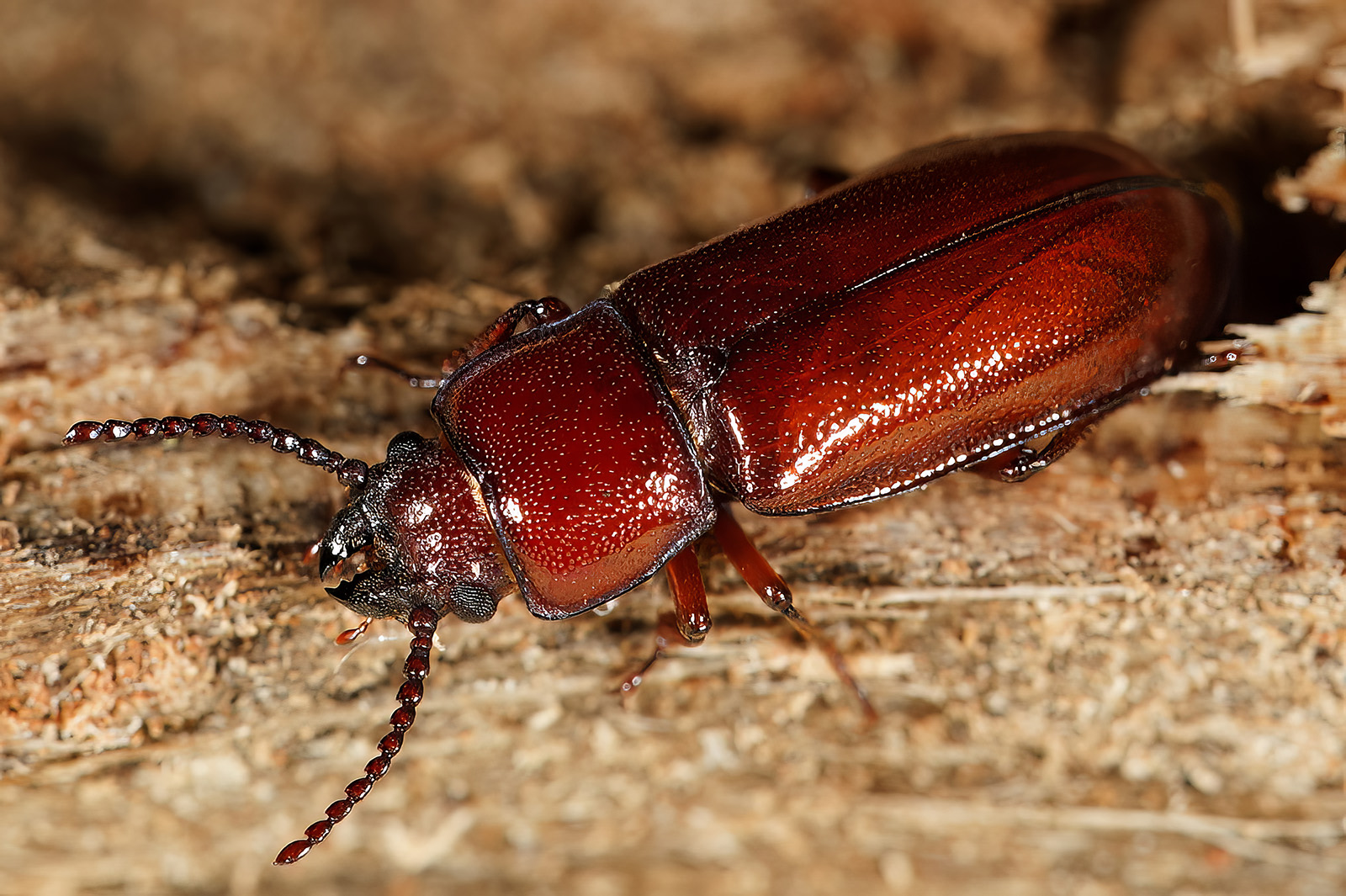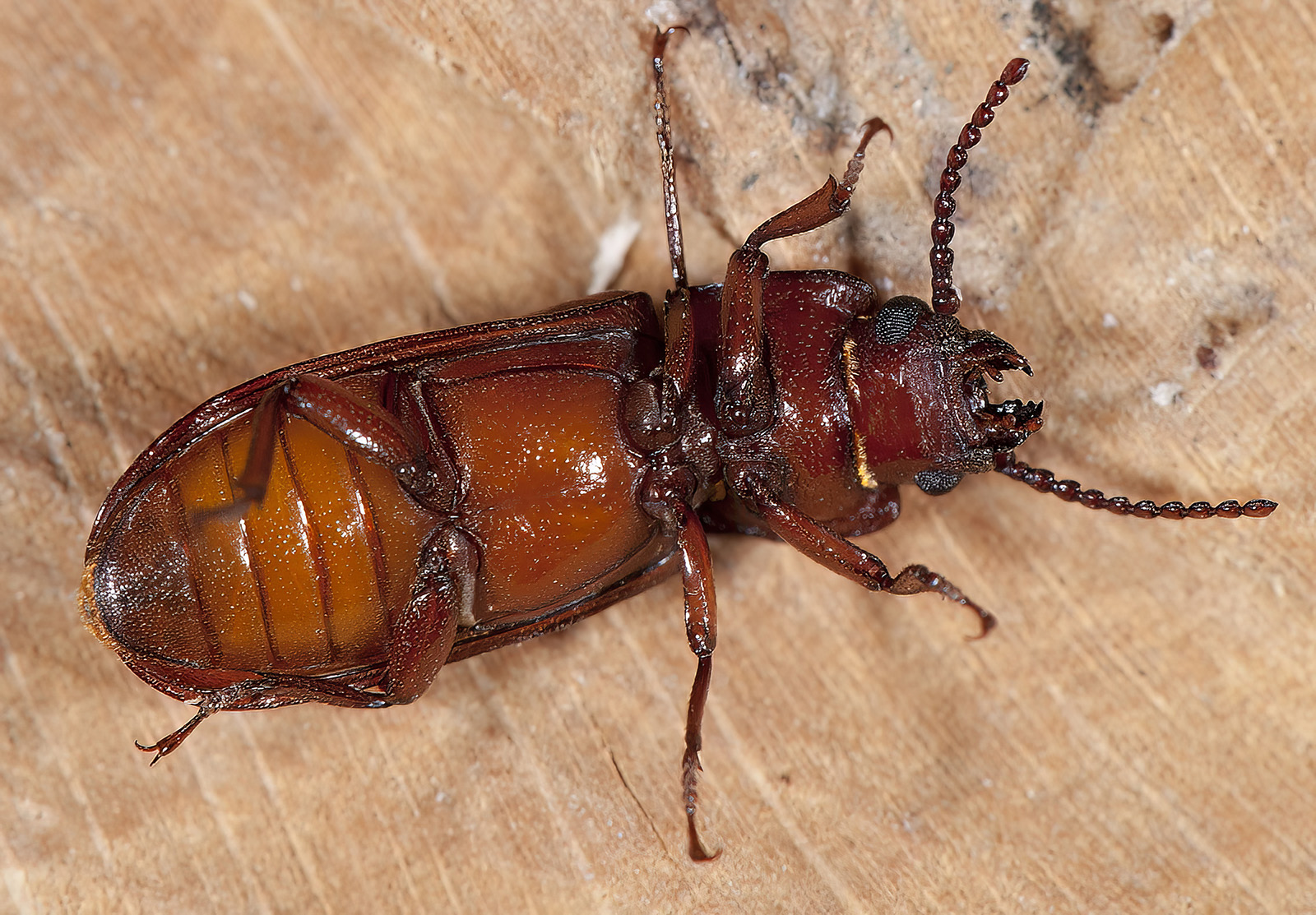Neandra brunnea (Fabricius, 1779) is a common Nearctic species (Canada, USA) , has been described from "Indiis" as Tenebrio brunneus by Johann Christian Fabricius in 1798 [▽].
This interesting representative of the Parandrinae subfamily was introduced and estabilished in the West Palaearctic region only in Dresden (Saxony, Germany) in the 19th century.
Larval development takes place in dead wood of living trees (Tilia, Populus in Dresden), hollow cavities, or in abraded places without bark [✧]. Adults are nocturnal and often
attracted to light and can be found on the host trees from July to September.
The subgenus Neandra Lameere, 1912, where the taxon has been included for a long time, was elevated to the genus by Antonio Santos-Silva in 2002 [❖].
| Body length: | 10 - 24 mm |
| Life cycle: | 2 - 3 years |
| Adults in: | July - September |
| Host plant: | polyphagous in deciduous trees (Tilia, Populus) |
| Distribution: | WP - Dresden (Saxony, Germany) |
The depicted beetles were found in Dresden (Saxony, Germany).
Collected by our friends Lech Kruszelnicki and Otto Hadač (✝2014)
[▽]
Fabricius J.Ch.:
Supplementum entomologiae systematicae.
Proft & Storch, Hafniae 572 pp., 1798.
[download  ]
]
[✧]
Craighead F.C.:
Contributions toward a classification and biology of the north american Cerambycidæ. Larvæ of the Prioninæ.
USDA Official Secretary Report, Washington 107: 1-24, 1915.
[download  ]
]
[❖]
Santos-Silva A.:
Notas e descrições em Parandrini (Coleoptera, Cerambycidae, Parandrinae)
Iheringia (Série Zoologia), Porto Alegre 92 (2): 29-52, 2002.
[download  ]
]





